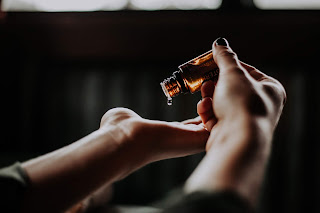How to Dilute Essential Oils for Skin Application

If you are going to use essential oils on your skin it is best to first dilute them in a carrier. Water is not a carrier for essential oils being applied to the skin. Carriers include: organic oil light lotion cream Below are some general dilution guidelines: 1% Dilution 1 oz (30 ml) — 5 to 6 drops 2 oz (60 ml) — 10 to 12 drops 2% Dilution 1 oz (30 ml) — 10 to 12 drops 2 oz (60 ml) — 20 to 24 drops 3% Dilution 1 oz (30 ml) — 15 to 18 drops 2 oz (60 ml) — 30 to 36 drops Below is how you choose which dilution to use: 1% Dilution — Use for children under 12, and seniors over 65, pregnant women and people with long-term illnesses or immune system disorders. A 1% dilution is also a good place to start with individuals who are generally sensitive to fragrances, chemicals or other environmental pollutants. 2% Dilution — Use for general health supporting blends such as skin care, natural perfumes, bath...

